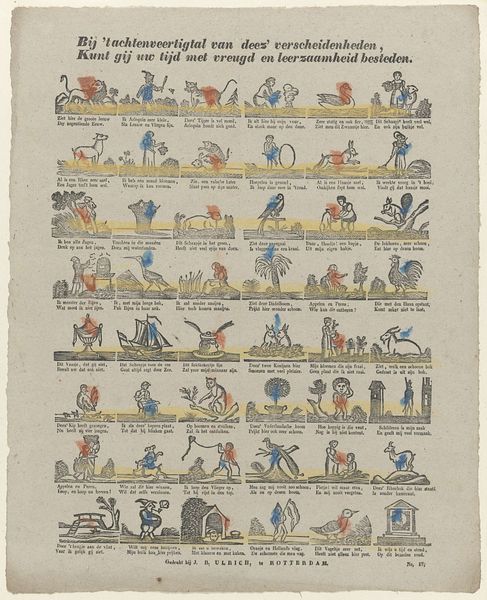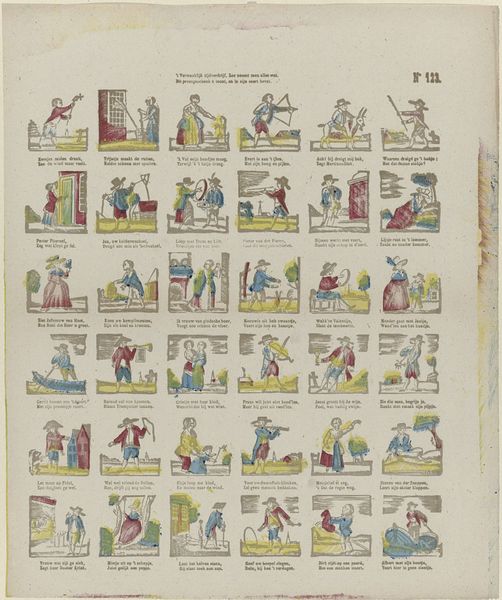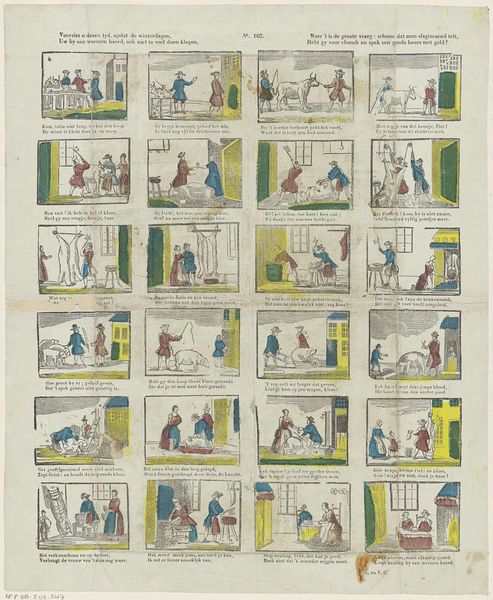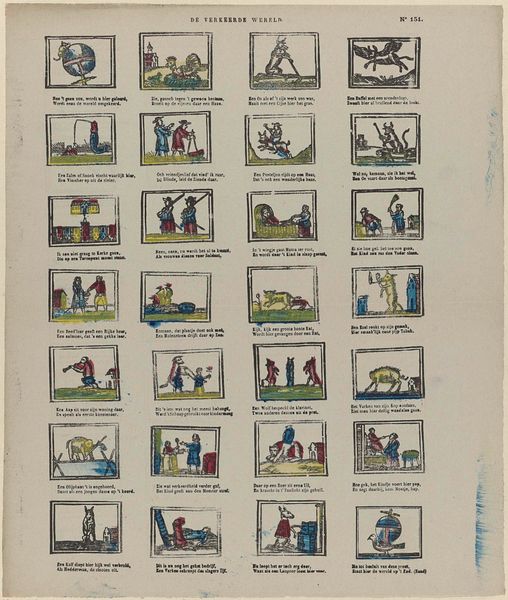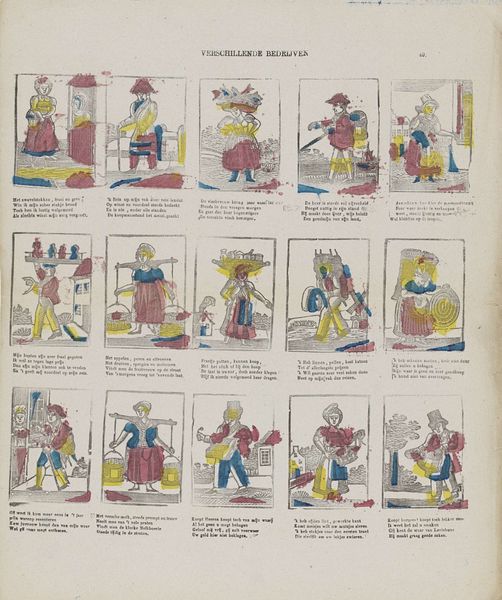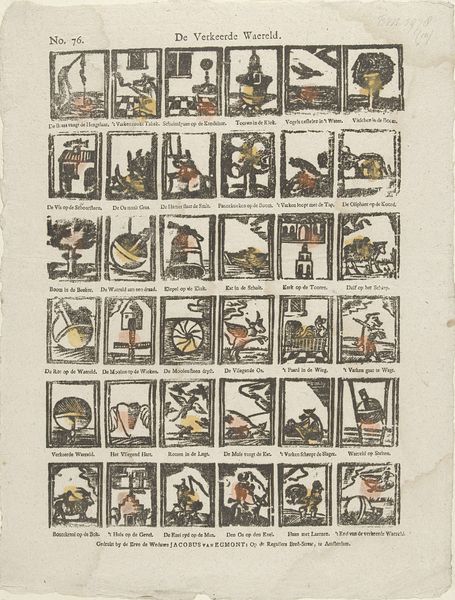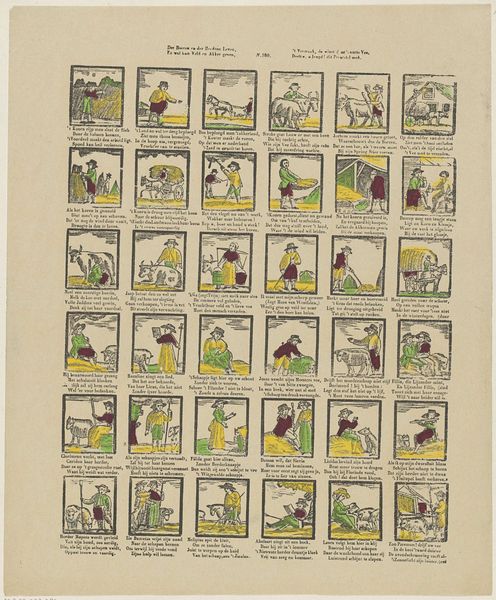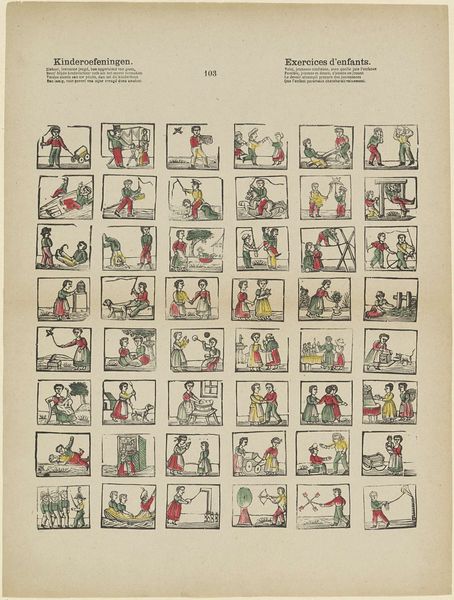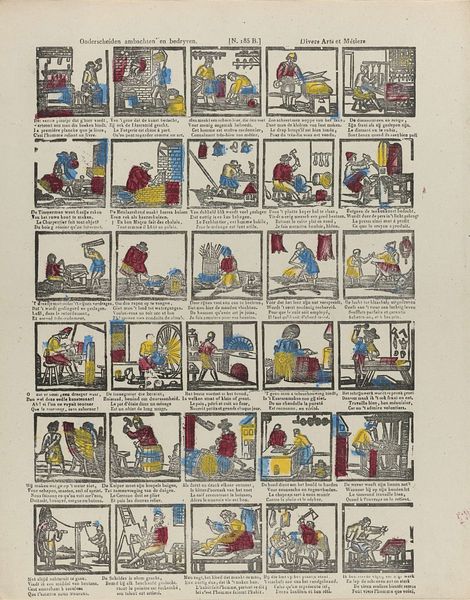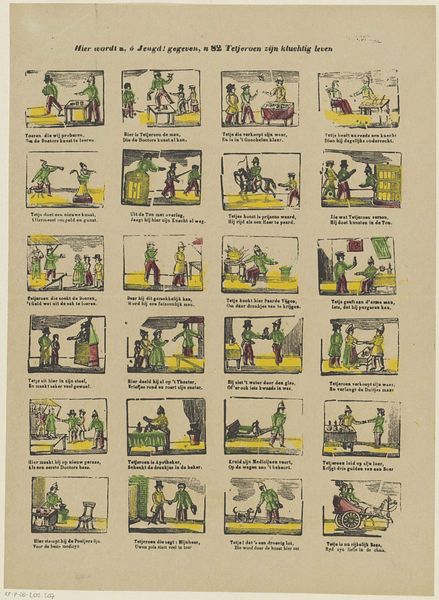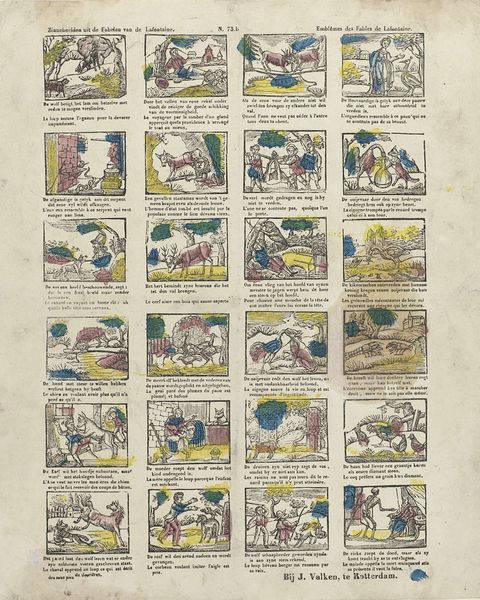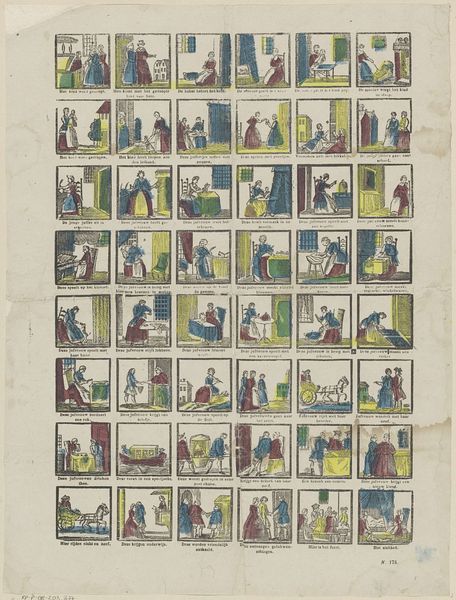
Wij, kind'ren u met deze snaken, / En met hun zang en spel vermaken / Ofschoon 't niet door uw ooren dringt, / Wat elk van hun of speelt of zingt 1827 - 1894
0:00
0:00
lithograph, print, paper
#
lithograph
# print
#
paper
#
folk-art
Dimensions: height 383 mm, width 315 mm
Copyright: Rijks Museum: Open Domain
Curator: Let's discuss this print titled "Wij, kind'ren u met deze snaken, / En met hun zang en spel vermaken / Ofschoon 't niet door uw ooren dringt, / Wat elk van hun of speelt of zingt" made between 1827 and 1894. It's a lithograph on paper by M. Hemeleers-van Houter, currently held in the Rijksmuseum. The visual style gives off a sense of naive charm with all of these small scenes presented together. How do you react to it? What draws your eye, and what questions does it bring to mind? Editor: It has an unusual comic strip-like format. Each block shows children engaged in play and music making. It’s rather sweet but also somewhat unsettling, perhaps because of the rigid composition. What might someone at the time this was made understand differently about seeing all of these figures represented in this style? Curator: Good question. These prints, often distributed as folk art, weren't just decorative. Consider the rise of print culture coinciding with burgeoning industrialization and shifts in class structure. Could these depictions of children's games be seen as idyllic, perhaps romanticized, representations of childhood, a subtle critique of the era's harsh realities for working-class families? The rigid composition, as you pointed out, adds another layer. Does it create a sense of order, control, perhaps even confinement? Editor: That's an interesting thought, presenting children’s pastimes in such an ordered structure. It creates this feeling that the activities could also be regulated. Does that imply that these prints offered a commentary on social norms and perhaps children's roles within that societal structure? Curator: Precisely. Folk art like this offers insight into anxieties and values present in that specific era. It prompts us to consider what societal functions this art served, both for those creating it and those consuming it. What do you take away from understanding that added context? Editor: Thinking about it as more than a decoration but really as an implicit commentary really emphasizes that these prints were likely responding to major issues of their time. Thank you!
Comments
No comments
Be the first to comment and join the conversation on the ultimate creative platform.
